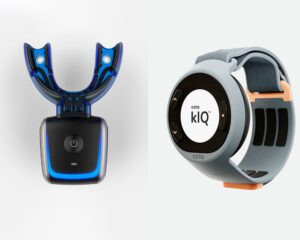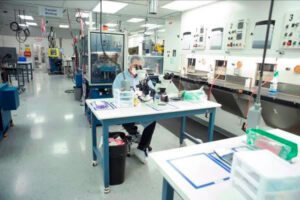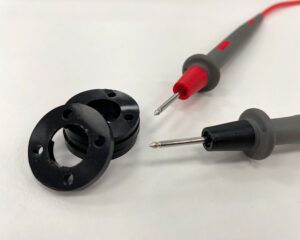LIM is employed primarily for creating liquid silicone rubber components with exceptional precision, uniformity, and consistency that meet stringent industry standards. It is popular in the medical and automotive industries, where flexibility and heat resistance are paramount. As the name implies, LIM involves injecting silicone in liquid form into heated molds where vulcanization occurs. Medical devices benefit from a range of available material. Applications are classified as long-term implantable, short-term implantable, or disposable. Long-term implantable devices require silicone that has undergone specific biological testing to ensure patient safety.
Plastic Molding
Plastic molding is the most extensively used method in manufacturing. This process entails forcefully injecting molten plastic into a cooled mold, producing highly precise components and products. It is preferred for its efficiency, repeatability, and cost-effectiveness, which make it indispensable in industries ranging from automotive to electronics.
Overmolding
Overmolding combines two or more distinct materials within a single molded component. This process allows for creating parts with multiple layers, colors, or properties in one operation. Furthermore, it is often used in applications requiring enhanced grip, aesthetics, or diverse material properties. These include producing tools with soft and ergonomic handles for user comfort and control.
Insert Molding
Insert molding is where a pre-fabricated component is strategically positioned within the mold cavity before a silicone or plastic material is injected around it. This technique integrates pre-made parts (inserts) into the final product to create a cohesive workpiece. It is advantageous for applications where metal objects must be securely encapsulated by elastomers for insulation or enhanced functionality.
Metal Injection Molding (MIM)
MIM is a specialized manufacturing process closely resembling plastic molding but tailored for metallic components. It involves mixing finely powdered metals with a binder material to create a feedstock. This is then injected into a mold cavity under high pressure. Afterward, the binder is removed, and the residual part is sintered at high temperatures to achieve the desired density and mechanical properties. ProMed typically sources metal components from reputable, qualified and approved vendors.
Industries Leveraging Molded Manufacturing Techniques
Many fields benefit from molding techniques due to their precision and ability to produce complex designs efficiently. Common industries that ProMed’s services may support include the following:
- Aerospace: air ducts, fairings, cable clamps, mounting brackets, seals, and gaskets
- Automotive: engine components and sensors
- Electronics: cases, connectors, and internal components
- Medical and healthcare: medical devices, implants, drug delivery devices, surgical and diagnostic tools
- Renewable energy: components in wind turbines, solar panels, and energy storage systems




